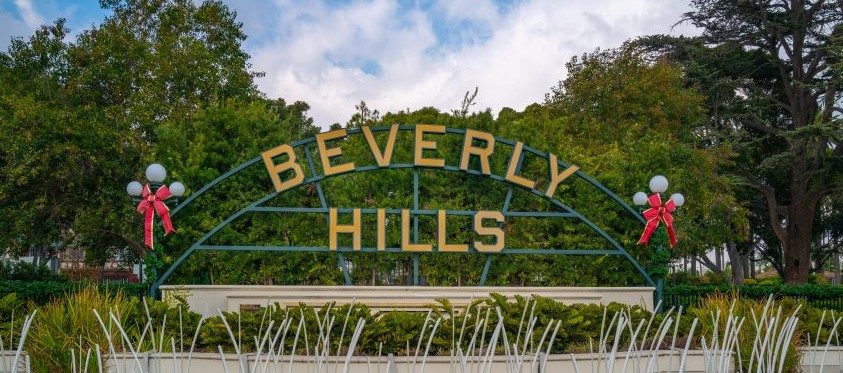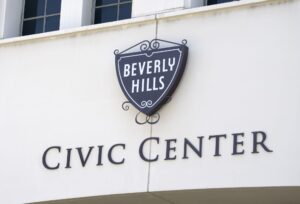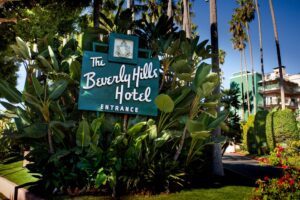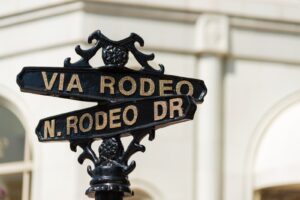
History of Beverly Hills
Beverly Hills, renowned for its luxurious lifestyle and iconic landmarks, has a rich and fascinating history. From its humble beginnings as a Spanish ranch in the 19th century to becoming a glamorous city synonymous with fame and opulence, Beverly Hills has undergone significant transformations. This blog delves into the captivating journey of Beverly Hills, exploring the history of Beverly Hills, it’s growth, notable developments, and cultural significance.
Spanish Land Grant and Early Settlement
The Spanish Land Grant and Early Settlement in Beverly Hills trace back to the 19th century when the region was under Spanish and Mexican rule. In 1828, María Rita Quinteros de Valdez received a significant land grant known as Rancho Rodeo de las Aguas, which encompassed the future site of Beverly Hills. However, the land remained primarily undeveloped until Benjamin Davis Wilson, a prominent Californio, acquired it in 1854.
Under Wilson’s ownership, the land was transformed into the “La Cienega Rancho” and used for cattle ranching and agriculture. It was during this time that the area started to see gradual settlement and the establishment of a small community. The land changed hands multiple times after Wilson, with subsequent owners dividing it into smaller parcels for farming and residential purposes.
Transformation into a Residential Oasis

- Rise of residential development: Following its incorporation as a city in 1914, Beverly Hills experienced a significant transformation from agricultural land to an exclusive residential oasis.
- Beverly Hills Speedway: The construction of the Beverly Hills Speedway in 1919, a 1.25-mile racetrack, attracted attention to the area and stimulated real estate development.
- Beverly Hills Hotel: The iconic Beverly Hills Hotel, completed in 1912, became a symbol of elegance and luxury, attracting wealthy individuals and celebrities to the area.
- Garden city planning: The city’s early development embraced a garden city concept, with wide tree-lined streets, meticulously maintained gardens, and opulent estates.
- Architectural styles: The residential architecture of Beverly Hills reflects a mix of styles, including Spanish Colonial Revival, Mediterranean Revival, and Tudor Revival, showcasing the city’s distinct character.
- Beverly Hills Civic Center: The establishment of the Beverly Hills Civic Center in the 1930s brought public buildings and recreational facilities to the city, enhancing its appeal as a desirable place to live.
The Birth of the Beverly Hills Hotel

The birth of the Beverly Hills Hotel marks a significant milestone in the history of Beverly Hills. Completed in 1912, the hotel quickly became an iconic symbol of elegance, attracting wealthy individuals, celebrities, and distinguished guests from around the world.
The Beverly Hills Hotel, also known as “The Pink Palace,” was initially envisioned by Burton Green and his partners. They saw the potential of Beverly Hills as a glamorous destination and decided to create a luxurious hotel that would cater to the elite clientele. Architect Elmer Grey designed the hotel in a distinctive Mediterranean Revival style, characterized by its pink exterior, white trimmings, and lush tropical gardens.
Upon its opening, the hotel’s grandeur and opulence captured the attention of the affluent and famous. It boasted luxurious accommodations, impeccable service, and amenities such as a swimming pool, tennis courts, and polo fields. The Polo Lounge, a renowned restaurant and gathering spot within the hotel, became a popular hub for celebrities and power players in the entertainment industry.
Over the years, the Beverly Hills Hotel has played host to numerous notable guests, including Hollywood stars, politicians, and royalty. Its timeless elegance and rich history have contributed to its enduring reputation as a symbol of luxury and exclusivity.
Today, the Beverly Hills Hotel stands as a testament to the glamour and sophistication that define Beverly Hills. It remains an iconic landmark, beloved by locals and admired by visitors, continuing to uphold its legacy as one of the world’s most prestigious hotels. ABC Movers Beverly Hills frequently works in Beverly Hills and surrounding areas.
The Rise of the Movie Industry and Celebrity Influence
- Hollywood’s proximity: The close proximity to Hollywood played a pivotal role in the history of Beverly Hills and its association with the movie industry. As the film industry flourished in the early 20th century, many Hollywood stars sought the allure and exclusivity offered by the nearby Beverly Hills.
- Celebrity residents: A significant factor in Beverly Hills’ rise to prominence was the influx of celebrities who chose to make it their home. Stars like Charlie Chaplin, Mary Pickford, and Douglas Fairbanks were among the first to settle in the area, attracting attention and adding to its allure.
- Movie studio ownership: Several prominent Hollywood personalities, recognizing the appeal of Beverly Hills, acquired property and established their own movie studios in the vicinity. This further solidified the connection between the city and the movie industry, bringing prosperity and glamour to the area.
- Architectural influence: The presence of celebrities and movie industry moguls in Beverly Hills influenced the architectural landscape. Many luxurious estates and mansions were built, showcasing various architectural styles and serving as a reflection of the residents’ wealth and taste.
- Social scene and exclusivity: The combination of celebrity residents, upscale establishments, and luxurious amenities created a vibrant social scene in Beverly Hills. The city became a hub for parties, galas, and events, attracting the crème de la crème of Hollywood’s elite.
- Media attention: The presence of celebrities and the vibrant entertainment industry in Beverly Hills brought increased media attention to the city. The press coverage further propelled its image as a glamorous and desirable place to live.
- Influence on popular culture: Beverly Hills’ association with the movie industry and celebrity lifestyle has permeated popular culture. It has become a symbol of wealth, luxury, and aspiration, featured in films, television shows, and music.
- Continued celebrity allure: Even to this day, Beverly Hills maintains its allure for celebrities and high-profile individuals. The city remains a sought-after residential destination, drawing in famous names who contribute to its ongoing legacy of celebrity influence.
The rise of the movie industry and the influence of celebrities have played a significant role in shaping Beverly Hills’ reputation and image. From Hollywood’s proximity and the presence of celebrity residents to the architectural influence, vibrant social scene, and media attention, Beverly Hills continues to be synonymous with fame, glamour, and the allure of the silver screen.
Architectural Marvels and the Influence of Hollywood
The architectural marvels of Beverly Hills and the influence of Hollywood Regency style have left an indelible mark on the city’s landscape and cultural identity. This section explores the unique architectural heritage and the impact of the glamorous Hollywood Regency style on the history of Beverly Hills.
Beverly Hills is renowned for its diverse range of architectural styles, with notable examples of Spanish Colonial Revival, Mediterranean Revival, Tudor Revival, and Mid-century Modern architecture. These architectural styles were heavily influenced by the tastes and preferences of the affluent residents, including Hollywood celebrities, who sought to create opulent and visually stunning residences.
One particular architectural style that gained prominence in Beverly Hills is the Hollywood Regency style. This style emerged in the 1930s and 1940s, blending elements of classical design, Art Deco, and modernism. Characterized by its grandeur, luxuriousness, and emphasis on glamour, Hollywood Regency became synonymous with the upscale lifestyle associated with the city.
Architectural marvels like the Greystone Mansion, the Beverly Hills Hotel, and numerous luxurious estates exemplify the Hollywood Regency style. These structures feature ornate detailing, elegant proportions, lavish interiors, and meticulously manicured landscapes. They reflect the era’s fascination with sophistication and the desire to create enchanting environments that exuded glamour and exclusivity.
The influence of Hollywood Regency style extends beyond individual residences. It has shaped the overall aesthetic of Beverly Hills, with public buildings, hotels, and commercial establishments adopting elements of this style to maintain a cohesive and luxurious atmosphere throughout the city.
Today, the architectural marvels of Beverly Hills continue to captivate residents and visitors alike, providing a glimpse into the city’s glamorous past. The Hollywood Regency style, with its timeless elegance and emphasis on opulence, serves as a reminder of the enduring legacy of Beverly Hills as an architectural and cultural icon.
Rodeo Drive: The Epitome of Luxury Shopping

- Origins of Rodeo Drive: Rodeo Drive, located in the heart of Beverly Hills, has become synonymous with luxury shopping. It originated as a residential street and gradually transformed into a premier shopping destination.
- Development as a shopping district: In the 1960s, Rodeo Drive underwent a transformation, attracting high-end fashion boutiques and luxury brands. The presence of prestigious retailers elevated its status as a luxury shopping district.
- Iconic designer boutiques: Rodeo Drive became home to renowned designer boutiques, including Gucci, Chanel, Prada, Louis Vuitton, and Versace. These establishments further solidified its reputation as a destination for luxury fashion and accessories.
- Exclusive shopping experience: Rodeo Drive offers an exclusive shopping experience characterized by personalized service, elegant storefronts, and a curated selection of high-end merchandise. It caters to discerning clientele seeking luxury and refinement.
- Architectural allure: The architecture along Rodeo Drive is notable, featuring beautifully designed buildings with striking facades and upscale interiors. The aesthetics of the street contribute to its allure and create a luxurious ambiance.
- Global recognition: Rodeo Drive’s reputation extends far beyond Beverly Hills, garnering international recognition as a premier luxury shopping destination. It attracts visitors from around the world who come to experience the epitome of luxury retail.
- Cultural significance: Rodeo Drive has been featured in numerous films, television shows, and works of literature, solidifying its place in popular culture as a symbol of luxury and glamour.
- Economic impact: The success of Rodeo Drive has had a significant economic impact on Beverly Hills, attracting tourists, generating revenue, and contributing to the city’s overall prosperity.
Rodeo Drive stands as the epitome of luxury shopping, with its origins as a residential street transitioning into a world-renowned retail destination. The presence of iconic designer boutiques, an exclusive shopping experience, captivating architecture, global recognition, cultural significance, and substantial economic impact have made Rodeo Drive a symbol of opulence and sophistication in the heart of Beverly Hills. ABC Movers Beverly Hills does many moves in the Rodeo Drive area, both residential and commercial.
Notable Residents and Celebrity Mansions
Notable residents and their extravagant mansions have played a significant role in shaping the allure and reputation of Beverly Hills. This section explores the history of notable residents and the iconic celebrity mansions that have become synonymous with the city’s glamour and luxury.
Beverly Hills has long been home to an array of influential figures from the world of entertainment, business, and politics. Prominent Hollywood stars, industry magnates, and influential personalities have sought solace and exclusivity within the city’s boundaries.
Over the years, celebrities such as Elvis Presley, Frank Sinatra, Elizabeth Taylor, and Marilyn Monroe have called Beverly Hills home. These notable residents not only added to the city’s allure but also left an indelible mark on the history of Beverly Hills and its cultural legacy.
One of the defining features of Beverly Hills is its collection of opulent mansions owned by celebrities. These lavish estates showcase architectural brilliance, impeccable craftsmanship, and exquisite landscaping. The iconic celebrity mansions, such as the Greystone Mansion, the Pickfair Estate, and the Playboy Mansion, have become landmarks in their own right, embodying the luxurious lifestyle associated with Beverly Hills.
The celebrity mansions of Beverly Hills have often served as symbols of success, wealth, and style. They have been featured in films, television shows, and magazine spreads, captivating the imagination of millions around the world.
Today, while the ownership of celebrity mansions may change, the legacy and allure of these extravagant properties remain. They continue to capture the fascination of visitors, who embark on tours to catch a glimpse of the glamorous lifestyle associated with the city’s notable residents.
The notable residents and celebrity mansions of Beverly Hills are a testament to the city’s enduring legacy as a haven for the rich, famous, and influential. They have contributed to the city’s reputation as a pinnacle of luxury living and have left an indelible mark on its history and cultural fabric.
Cultural Impact and Global Recognition
Beverly Hills’ cultural impact and global recognition are evident in its representation in popular culture, influence on fashion and style, status as an entertainment industry hub, thriving culinary scene, presence of art and cultural institutions, role in global tourism, significance in the real estate market, and powerful brand recognition. The city’s rich history and glamorous reputation have propelled it onto the international stage, solidifying its position as an icon of prestige and sophistication.
- Pop culture representation: Beverly Hills has made a significant cultural impact, becoming a prominent fixture in popular culture. It has been depicted in films, television shows, music, and literature, solidifying its status as a symbol of wealth, luxury, and the American dream.
- Fashion and style influence: The city’s association with fashion and style has contributed to its global recognition. Beverly Hills has influenced trends, setting the standard for elegance and sophistication in the world of fashion.
- Entertainment industry hub: The close proximity to Hollywood and the presence of notable celebrities have established Beverly Hills as an entertainment industry hub. The city has been a backdrop for red carpet events, award shows, and celebrity gatherings, further bolstering its cultural significance.
- Fine dining and culinary scene: Beverly Hills’ culinary scene has garnered international acclaim. Its array of high-end restaurants and renowned chefs have shaped the city’s reputation as a gastronomic destination, attracting food enthusiasts from around the world.
- Art and cultural institutions: The city is home to various art galleries, museums, and cultural institutions that show off the history of Beverly Hills and contribute to its cultural landscape. These establishments showcase a diverse range of artwork and host exhibitions, fostering creativity and artistic expression.
- Global tourism and economic impact: Beverly Hills attracts visitors from across the globe who come to experience its luxurious offerings. Tourism plays a vital role in the city’s economy, generating revenue and employment opportunities.
- Real estate market: The high-profile real estate market of Beverly Hills has gained international recognition. Its multimillion-dollar properties and exclusive neighborhoods have become synonymous with luxury living and high-end real estate investments.
- Brand recognition: The name “Beverly Hills” carries a powerful brand recognition worldwide, evoking images of wealth, luxury, and exclusivity. It is synonymous with a certain lifestyle and has become a desirable destination for the affluent and aspirational individuals.
Beverly Hills’ cultural impact and global recognition are evident in its representation in popular culture, influence on fashion and style, status as an entertainment industry hub, thriving culinary scene, presence of art and cultural institutions, role in global tourism, significance in the real estate market, and powerful brand recognition. The cultural history of Beverly Hills, and its glamorous reputation have propelled it onto the international stage, solidifying its position as an icon of prestige and sophistication.
A Brief Recap of the History of Beverly Hills
Working remotely offers tremendous opportunities, but it requires deliberate strategies to optimize productivity. This blog will explore essential aspects such as creating a productive workspace, establishing routines, managing time, minimizing distractions, setting clear goals, enhancing communication, maintaining work-life balance, and prioritizing well-being. By implementing these practices, individuals and teams can thrive in a remote work environment and achieve their highest level of productivity.

